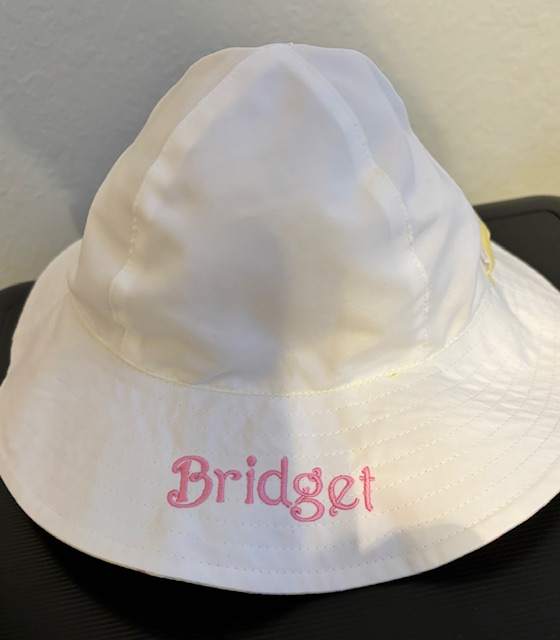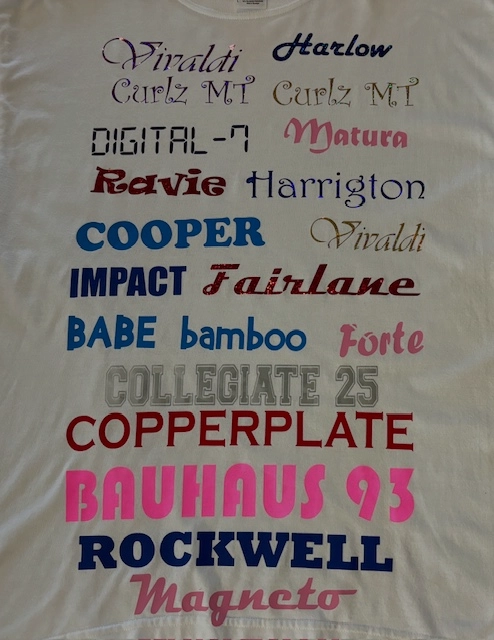Stylish Monogramming on Towels for a Touch of Deluxe
Stylish Monogramming on Towels for a Touch of Deluxe
Blog Article
The Art of Customized Needlework: Opening the Tricks to Creating Unique and Unforgettable Styles
The tricks to creating custom embroidery styles that mesmerize the eye and leave an enduring perception lie in a fragile equilibrium of strategy, imagination, and interest to detail. As we dive right into the globe of customized embroidery, we discover the nuanced interplay between thread option, sew complexity, and layout personalization that raises a simple garment to a job of art.
Selecting the Right Embroidery Threads
When picking embroidery strings, what key variables should you consider to guarantee the most effective outcomes for your custom designs? The option of embroidery thread is critical in identifying the final outcome of your stitched design. Among the primary considerations is the product of the string. Different products such as cotton, polyester, rayon, and silk offer varying degrees of sheen, sturdiness, and appearance. It is necessary to pick a string product that complements the textile you are stitching on and straightens with the wanted appearance of the design.
Thicker threads can include dimension and appearance to your style, while finer threads are optimal for complex information and little text. Additionally, considering the shade fastness and washability of the string is vital to make sure that your custom designs keep their top quality and vibrancy over time.
Discovering Different Stitch Techniques
To dive right into the realm of 'Checking out Different Stitch Strategies', one need to understand the ins and outs and nuances that each sewing method offers the art of needlework. Different stitch techniques not only include aesthetic rate of interest but likewise add to the overall texture and measurement of the style. One prominent stitch method is the satin stitch, which includes carefully jam-packed parallel stitches to create a smooth and glossy surface, perfect for completing shapes and developing vibrant details.
On the other hand, the backstitch is a versatile technique frequently made use of for laying out and including fine information. It includes stitching in reverse to create a strong line of embroidery. Furthermore, the French knot stitch includes a tactile aspect to styles, best for creating distinctive accents like flower facilities or attractive touches.
Exploring various stitch techniques enables embroiderers to have fun with light, shadow, and deepness within their styles, boosting the aesthetic charm and artistic quality of their embroidery projects. By grasping various sewing techniques, one can open limitless opportunities for creating special and unforgettable custom embroidery items.
Incorporating Personalized Design Aspects
Having checked out the details of various stitch strategies such as the satin stitch, backstitch, and French knot, the emphasis currently moves towards integrating personalized layout aspects in customized embroidery projects. Individualized layout components play an important function in making needlework tasks absolutely unique and remarkable. One method to include customization pop over to these guys is by including initials, names, or substantial days to the style. This not just adds an individualized touch but also boosts the sentimental worth of the embroidery item.
Another way to include tailored layout elements is by including signs or concepts that hold unique meaning to the recipient or show their interests and character. Integrating a preferred flower, animal, or hobby-related sign can make the embroidery design more meaningful and customized. Furthermore, selecting colors that resonate with the recipient or line up with the intended motif can better enhance the customization of the needlework job.
Understanding the Art of Color Coordination

One key facet of shade coordination is understanding shade theory. This includes recognizing exactly how different colors communicate with each various other, the feelings they convey, and just how they can be integrated to create aesthetically appealing designs. By applying color concept principles, embroiderers can create harmonious shade combinations that improve the overall look of the layout.
Furthermore, taking note of comparison is important in shade control. Utilizing contrasting colors can aid certain aspects of the layout pop, boost clarity, and develop a visually dynamic embroidery piece. By mastering the art of shade visit our website sychronisation, embroiderers can elevate their styles and create remarkable pieces that resonate with customers and audiences alike.
Enhancing Structure With Advanced Embroidery Stitches

Bullion knots, on the various other hand, can be utilized to develop twisted, ropelike components that add a glamorous feeling to the embroidery. Experimenting with these advanced embroidery stitches allows you to push the borders of typical needlework and produce truly distinct and aesthetically attractive textures in your designs.
Final Thought
In conclusion, the art of personalized needlework involves a mix of picking the right strings, discovering various stitch methods, integrating tailored design components, grasping color control, and enhancing appearance with advanced stitches. By understanding and applying these crucial components, embroiderers can produce one-of-a-kind and memorable styles that showcase their imagination and skill. Embroidery lovers can unlock the secrets to producing beautiful and bespoke items that stick out and leave a long-term impact.
Report this page